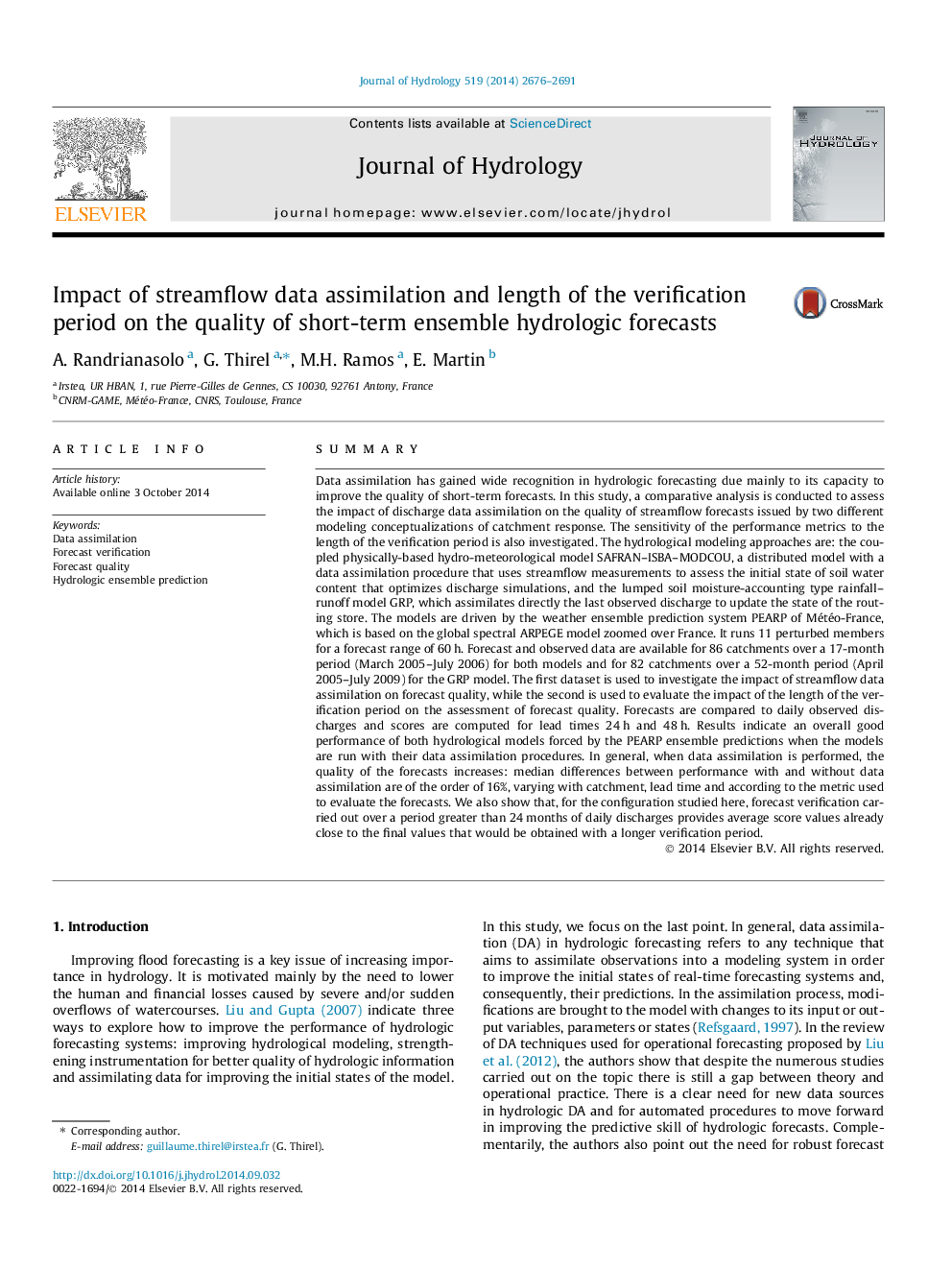| Article ID | Journal | Published Year | Pages | File Type |
|---|---|---|---|---|
| 6412122 | Journal of Hydrology | 2014 | 16 Pages |
â¢Verification is carried out with different hydrologic-DA modeling configurations.â¢Benefits of streamflow data assimilation for short-term forecasts are demonstrated.â¢DA strategies may influence differently forecast quality over lead time.â¢Forecast scores may be stable over samples longer than 24 months.
SummaryData assimilation has gained wide recognition in hydrologic forecasting due mainly to its capacity to improve the quality of short-term forecasts. In this study, a comparative analysis is conducted to assess the impact of discharge data assimilation on the quality of streamflow forecasts issued by two different modeling conceptualizations of catchment response. The sensitivity of the performance metrics to the length of the verification period is also investigated. The hydrological modeling approaches are: the coupled physically-based hydro-meteorological model SAFRAN-ISBA-MODCOU, a distributed model with a data assimilation procedure that uses streamflow measurements to assess the initial state of soil water content that optimizes discharge simulations, and the lumped soil moisture-accounting type rainfall-runoff model GRP, which assimilates directly the last observed discharge to update the state of the routing store. The models are driven by the weather ensemble prediction system PEARP of Météo-France, which is based on the global spectral ARPEGE model zoomed over France. It runs 11 perturbed members for a forecast range of 60Â h. Forecast and observed data are available for 86 catchments over a 17-month period (March 2005-July 2006) for both models and for 82 catchments over a 52-month period (April 2005-July 2009) for the GRP model. The first dataset is used to investigate the impact of streamflow data assimilation on forecast quality, while the second is used to evaluate the impact of the length of the verification period on the assessment of forecast quality. Forecasts are compared to daily observed discharges and scores are computed for lead times 24Â h and 48Â h. Results indicate an overall good performance of both hydrological models forced by the PEARP ensemble predictions when the models are run with their data assimilation procedures. In general, when data assimilation is performed, the quality of the forecasts increases: median differences between performance with and without data assimilation are of the order of 16%, varying with catchment, lead time and according to the metric used to evaluate the forecasts. We also show that, for the configuration studied here, forecast verification carried out over a period greater than 24Â months of daily discharges provides average score values already close to the final values that would be obtained with a longer verification period.
